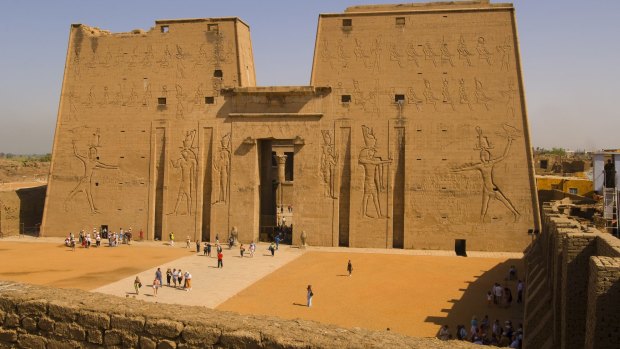
The Temple of Horus.Credit: Egyptian Tourist Authority
TEMPLE OF HORUS, EDFU
Most visitors miss this bunker-like temple, half-way between Luxor and Aswan, unless they're on a Nile river cruise, yet this is one of ancient Egypt's most atmospheric and best-preserved buildings. The massive getaway is flanked by brooding falcon statues, while the courtyard beyond is decorated with colourful (if faded) reliefs depicting festivals. The dark inner-Hypostyle Hall encapsulates all the drama of ancient Egypt, with vast soaring pillars ending in frothy representations of papyrus buds. Bring a torch to study the details, because reliefs and hieroglyphics unfold in a stunning array of shape and colour.
LUXOR TEMPLE, LUXOR
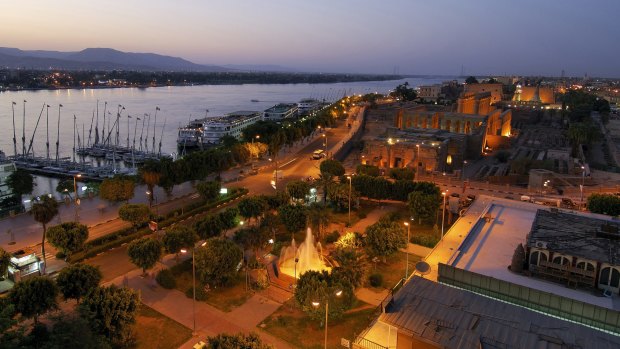
Credit: Egyptian Tourist Authority
This complex on the Nile River is a clutter of temples, courtyards, colonnades, rows of sphinxes and shrines, one of them a rare legacy of boy-king Tutankhamun's short reign. The Romans contributed a sanctuary converted to a church, and a mosque was later added, giving this site 3400 years of non-stop religious worship. Despite the bulk and muddle of the complex it has considerable grace and presence and is a wonderful clutter of obelisks and altars, statues and columns. No other site looks better floodlit at night, when its golden stone is slashed with atmospheric shadows.
KARNAK TEMPLE COMPLEX, LUXOR
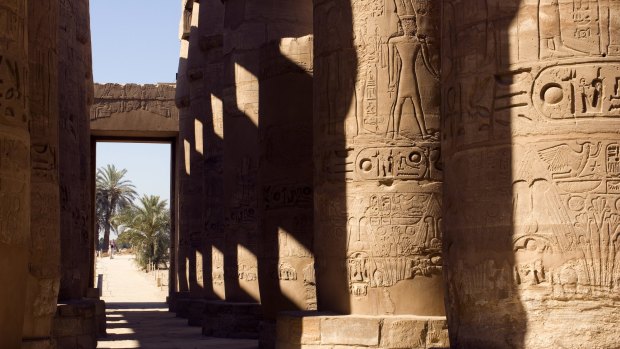
Credit: Egyptian Tourist Authority
This remains the largest religious complex ever built, covering 80 hectares, and was ancient Egypt's most important religious sanctuary. The Great Temple alone is larger than a cathedral, and the processional Avenue of Sphinxes that leads between it and Luxor Temple – finally fully restored and reopened in 2021 – runs for three kilometres. Avoid the middle of the day, when heat and tour groups are daunting; early morning is a quiet delight for those with poetic souls although, if you're determined to study everything, count on several hours. The highlight is the huge Great Hypostyle Hall and its carved pillars.
TEMPLE OF SOBEK, KOM OMBO
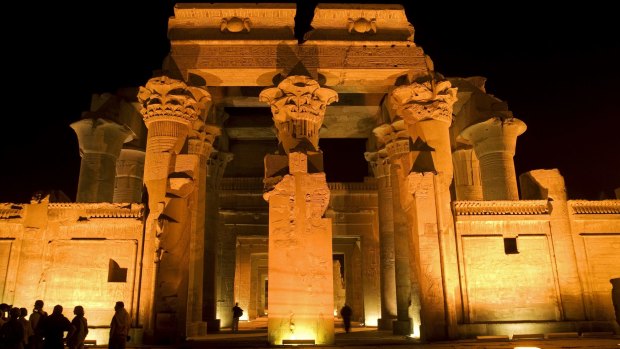
Credit: Egyptian Tourist Authority
Although neither large nor outstanding, this unusual twin temple 40 kilometres north of Aswan commands a superb clifftop location above a wide curve of the Nile River. Try to arrive in the late afternoon, when the sun turns the building into a glowing orange beacon. The temple is dedicated to falcon-headed god Haroeris and crocodile-headed god Sobek who are depicted all across the walls. Study the various tools depicted in frescoes in the far left-hand corner of the temple and join the debate over whether they represent surgical instruments. In a side building, mummified crocodile offerings sit on dusty shelves.
GREAT TEMPLE, ABU SIMBEL
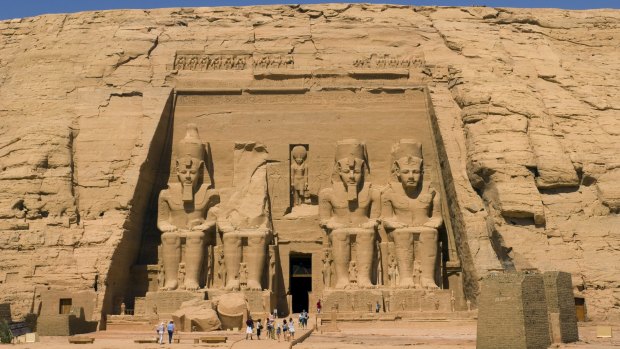
Credit: Egyptian Tourist Authority
The crack-of-dawn, three-hour drive into the desert from Aswan is worth it for this 3000-year-old temple, relocated before the construction of Aswan Dam. Four gargantuan statues of Ramesses II guard its entrance, one with a missing head which lies in the sand beneath and might make you ponder life's transient pretentions. Battle scenes, gods and vultures are frescoed in the interior. The sun's rays penetrate the temple only on the pharaoh's coronation day and birthday. A smaller temple nearby showcases 10-metre-tall statues and lovely wall art featuring Ramesses' elegant wife Nefertari.
TEMPLE OF ISIS, PHILAE
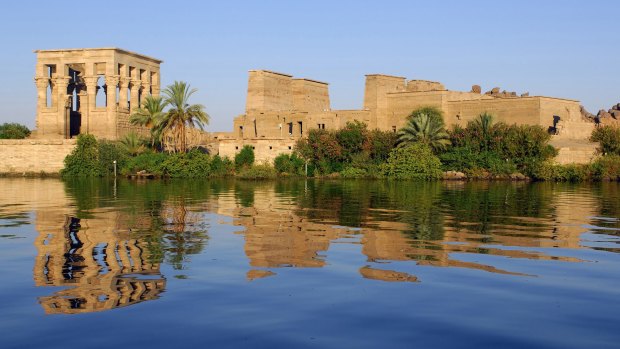
Credit: Egyptian Tourist Authority
Another relocated temple complex now sits on a wonderful island in dam waters that ripple with golden reflections just south of Aswan. Volcanic outcrops fringed with mohawks of palm trees dot the blue water. Hawks drift overhead and herons stroll at the water's edge. This is the most romantic temple in Egypt and has the most compelling sound-and-light show. The temple is young by Egyptian standards, built in the third century BCE, and has marvellous reliefs of mummification rituals and gods. The nearby Temple of Hathor depicts musicians, and a monkey playing a lute.
The writer travelled at his own expense.
Sign up for the Traveller Deals newsletter
Get exclusive travel deals delivered straight to your inbox. Sign up now.